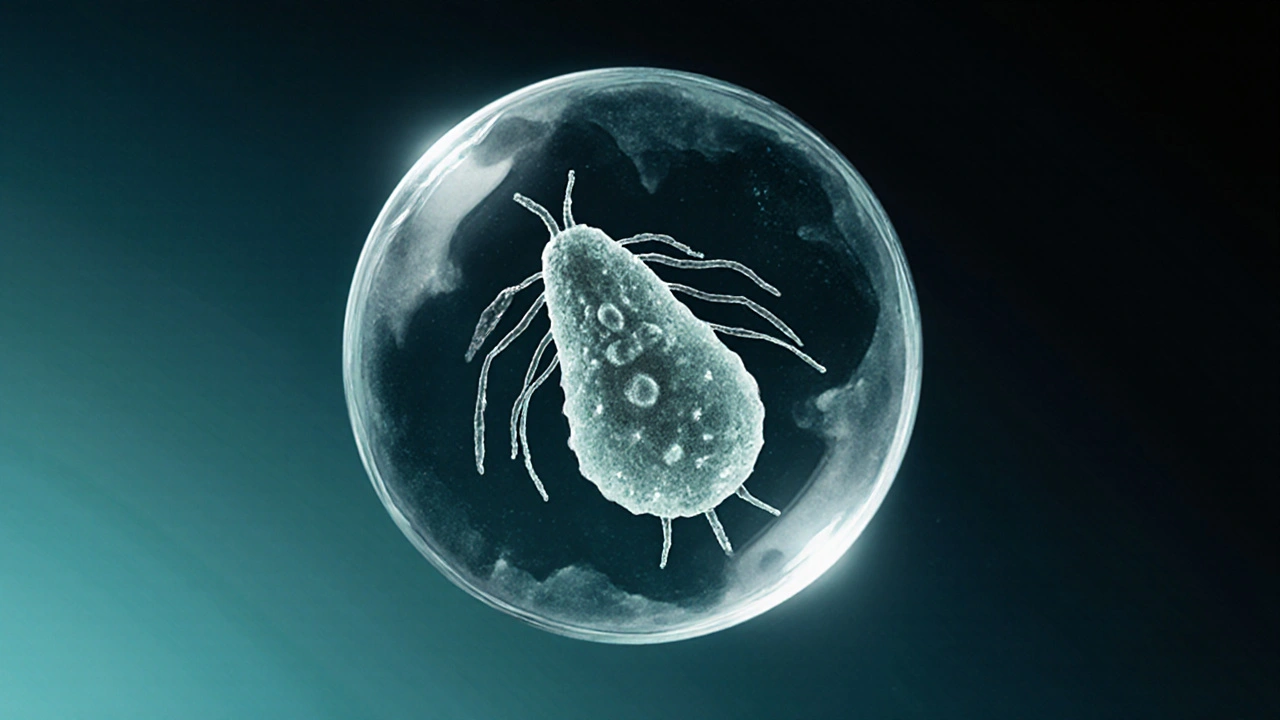Trichomonas vaginalis: What You Need to Know
When dealing with Trichomonas vaginalis, a flagellated protozoan that infects the urogenital tract. Also called Trichomonas, it is the cause of the most common non‑bacterial sexually transmitted infection worldwide. Understanding how this parasite works, how it spreads, and how to treat it can prevent complications and stop transmission.
Trichomonas vaginalis belongs to the broader group of trichomoniasis, the clinical condition triggered by the parasite. The infection affects millions each year, with women usually experiencing itching, discharge, and irritation, while men often have no symptoms at all. This asymmetry makes routine screening essential, especially for sexually active people.
One of the biggest challenges is accurate detection. Traditional microscopy looks for motile organisms in a saline wet mount, but the sensitivity drops below 60% when parasite numbers are low. Modern nucleic acid amplification tests (NAATs) raise detection rates above 90%, offering a reliable way to confirm infection even in asymptomatic cases. The choice of test influences how quickly treatment can start.
Treatment revolves around a handful of proven drugs. The first‑line option is metronidazole, a nitroimidazole antibiotic that kills the parasite by disrupting its DNA. A single 2 g dose or a 7‑day 500 mg twice‑daily regimen works for most patients. For those who can’t tolerate metronidazole, tinidazole provides a similar effect with fewer side effects. Both medications require abstinence from alcohol during treatment to avoid a disulfiram‑like reaction.
Resistance is rare but emerging. When metronidazole fails, higher‑dose or longer‑duration regimens may be tried, and alternative agents like secnidazole are under investigation. Monitoring response with a follow‑up test of cure, typically two weeks post‑therapy, ensures the infection is truly cleared and reduces the chance of reinfection.
Key Facts and Treatment Options
Beyond medication, partner management is crucial. Treating both partners simultaneously cuts the risk of re‑exposure by more than 80%. Health providers advise abstaining from sex for at least seven days after completing therapy, or until both partners test negative. Education on condom use and regular screening helps keep the infection from spreading in the community.
Pregnant women face special considerations. Metronidazole is generally considered safe in the second and third trimesters, but the first trimester remains a gray area. Discussing risks with an obstetrician ensures the best outcome for mother and baby. Untreated infection during pregnancy can increase the chance of preterm birth and low birth weight.
From a public‑health perspective, trichomoniasis acts as a co‑factor for HIV transmission. The inflammation it triggers in genital tissues makes it easier for the virus to cross mucosal barriers. Therefore, controlling Trichomonas vaginalis not only improves individual health but also contributes to broader HIV prevention efforts.
Screening recommendations vary by region, but most guidelines suggest testing sexually active women under 30, those with new or multiple partners, and individuals presenting with vaginal discharge. Men are often screened only if they have symptoms or a partner diagnosed with trichomoniasis.
Laboratory advances have made point‑of‑care NAATs feasible in many clinics, cutting turnaround time from days to hours. This rapid feedback loop speeds up treatment initiation, which is especially beneficial in low‑resource settings where follow‑up visits can be challenging.
While the parasite itself is fragile outside the body, it can survive in moist environments for short periods, underscoring the importance of personal hygiene and safe sexual practices. Simple steps—like showering after intercourse and avoiding douching—reduce the risk of irritation that can make infection symptoms worse.
In summary, Trichomonas vaginalis is a common, treatable STI that benefits from early detection, effective medication, and partner coordination. Below you’ll find a curated list of articles that dive deeper into diagnosis methods, medication safety, resistance trends, and lifestyle tips to keep you informed and protected.
- Colin Hurd
- Oct, 5 2025
- 7 Comments
Trichomoniasis Symptoms, Causes & Treatment Guide
A clear guide on trichomoniasis covering symptoms, causes, diagnosis, treatment options, prevention tips, and FAQs for anyone seeking reliable sexual health information.

